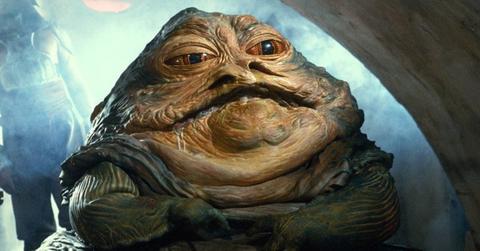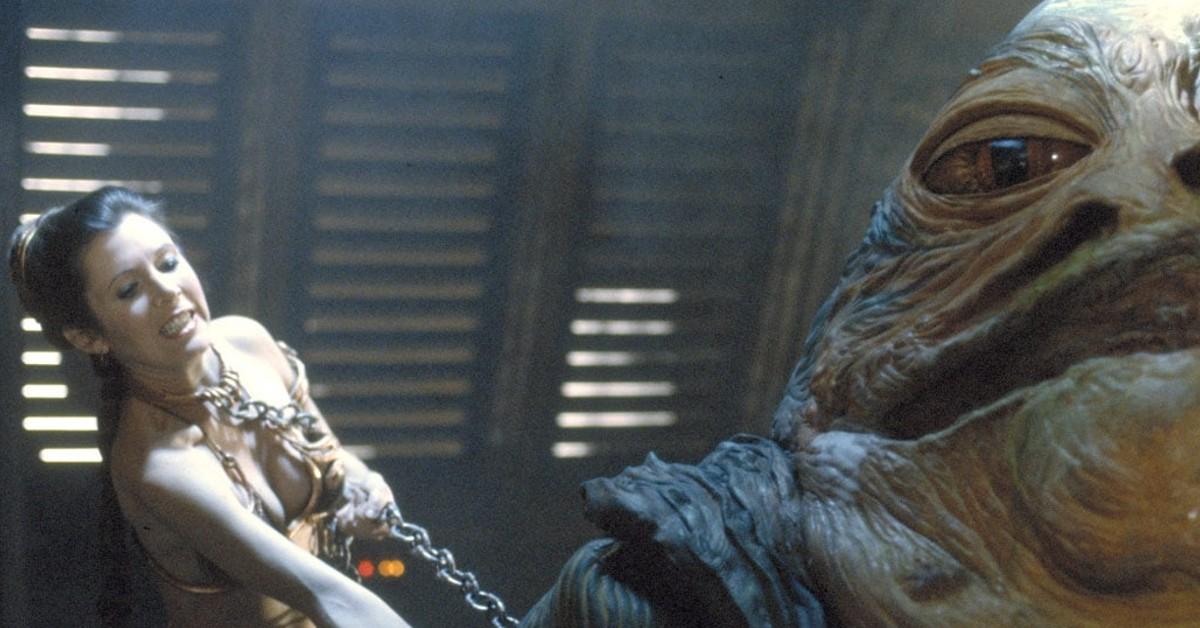How Jabba the Hutt's Death Ignited a 'Star Wars' Fan Movement
Updated Nov. 28 2022, 5:27 p.m. ET

In movies, there are many kinds of deaths. Sad deaths; deaths you can see coming from lightyears away that still hurt; deaths that inspire main characters to fulfill their destinies.
Then there are the happy deaths. The ultimate demise of antagonists and villains that prompt you to yell "good riddance!" at your TV.
Jabba the Hutt, possibly the grossest "bad guy" in the original Star Wars trilogy, is one of these deaths.
The (literally) slimy, slug-like crime boss met his end in 1980's Return of the Jedi, the final film in the first trio of Star Wars films. The moment, though iconic, changed the galaxy — and the life of the person responsible — forever.
How did Jabba the Hutt die? By his own cruelty — sort of.

Jabba the Hutt was a nasty villain, and not just because the Hutt species in Star Wars resembles a giant slug. He sat on a throne, sentenced anyone who displeased him to death (by dropping them into a pit with a hungry monster, yes really), and enslaved innocent people for his own entertainment.
One of these slaves was Princess Leia, and she finally had the physical strength to fight back.
Dressed in a revealing outfit not of her choosing and chained to his throne, she decided she wouldn't stand for his oppression anymore. As chaos erupted around Jabba, she took the opportunity to wrap the chain connecting them around his neck and pull it tight.
The symbolism of Leia using Jabba's power as a weapon to destroy him is just as great as it is graphic. It earned her a reputation that almost destroyed her political career.
Jabba the Hutt's death would come back to haunt Leia.
Years after freeing herself from Jabba's hold, Leia discovered that in the criminal underworld the Hutt was a major ruler over, she was known as "The Huttslayer."
The Star Wars novel Bloodline revealed that a dangerous criminal even kept a recording of Jabba's death that, if released to the public, would reveal what Leia had done.
That, combined with the widely public discovery that Darth Vader was Leia's father, seriously threatened her role as a New Republic Senator.
But just as she overcame the threat of Jabba's chain around her neck, the future General rose above the dark truths of her past and eventually went on to save the galaxy from evil ... again.
The term 'Huttslayer' actually came from a 'Star Wars' fan.
Star Wars: Bloodline author Claudia Gray revealed in a 2017 interview that her decision to turn "Slave Leia" into a more positive, empowering idea was inspired by a Star Wars fan on Twitter.
"Right around when I was working on this part of the book there was a movement that went around in some Star Wars fan circles — a lot of talk about how much people don’t like the ‘Slave Leia’ outfit," the author told EW. "That’s her most powerless moment in the entire thing."
Claudia continued, "Not only did I like recasting that outfit as a memory of Leia being really strong and kick-a—, but think about it — for a human being to kill a Hutt with her bare hands? That’s unbelievable. Anybody who would be able to pull that off would be remembered for it. That would be legend."
So not only was Jabba's death celebrated in-universe — it has now also become a symbol of empowerment among fans of the franchise. "Good riddance" indeed.